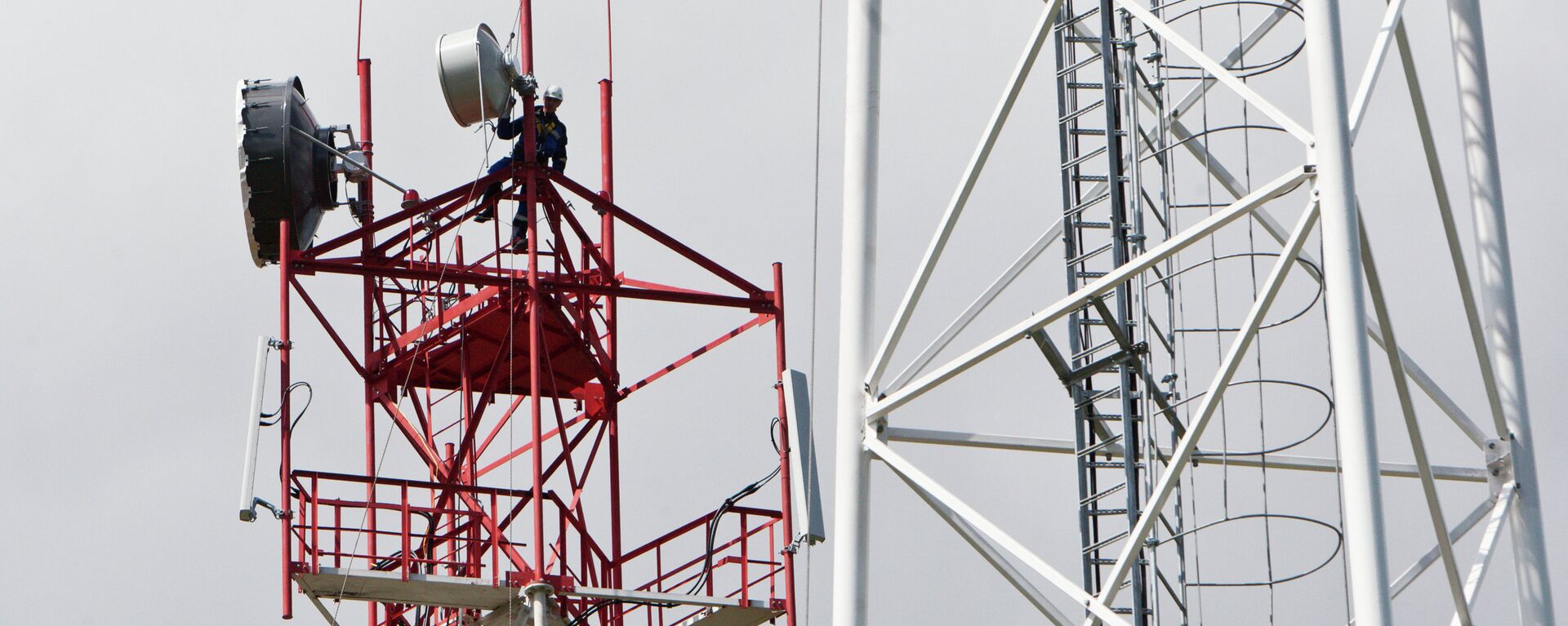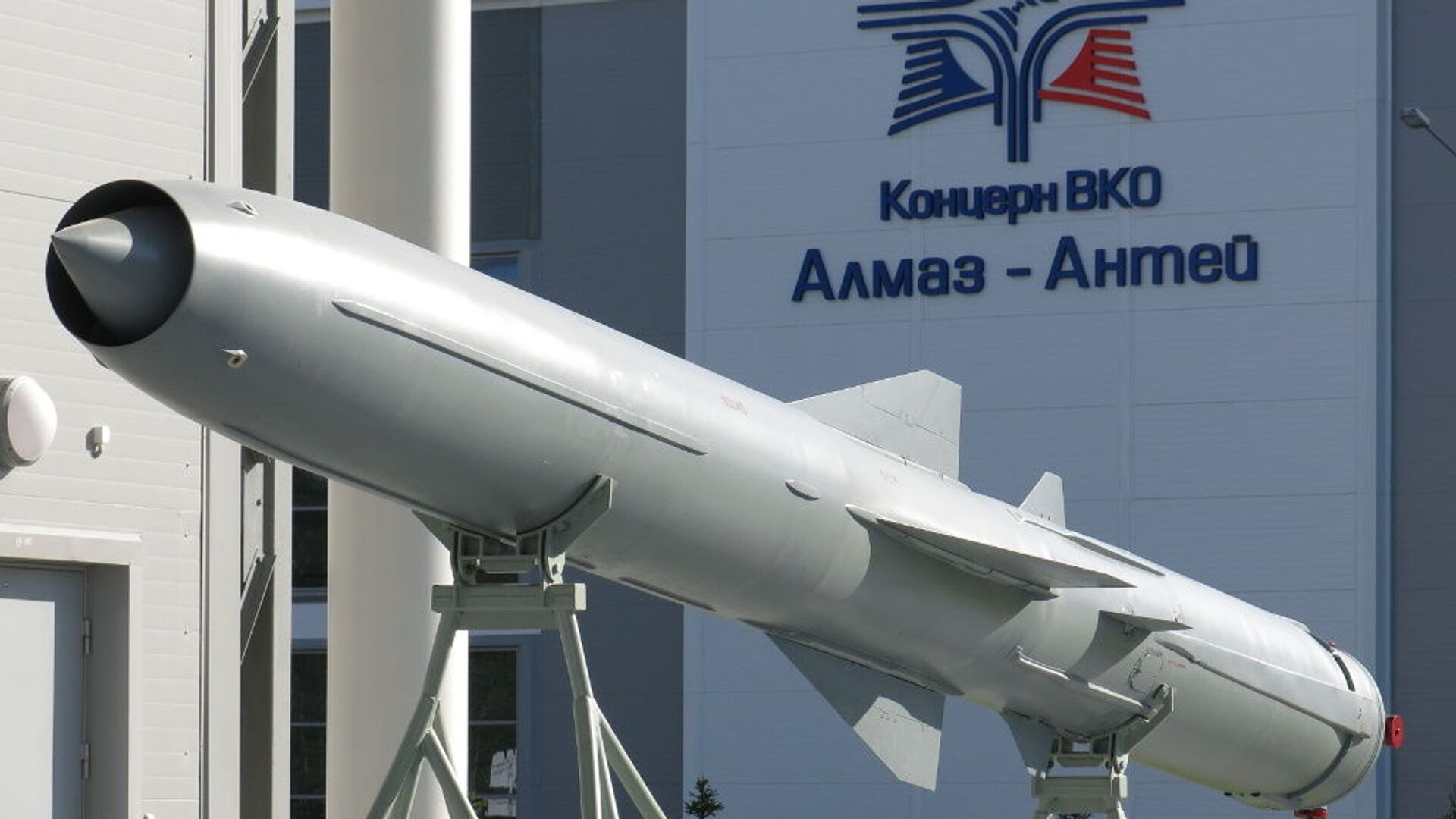https://sputnikglobe.com/20230614/which-russian-weapons-systems-have-built-in-ai-1111158825.html
Which Russian Weapons Systems Have Built-In AI?
Which Russian Weapons Systems Have Built-In AI?
Sputnik International
Russia’s minister of industry confirmed to Sputnik on Tuesday that an S-350 Vityaz missile system operating in “automatic mode” had been successfully used in the ongoing Russia-NATO proxy war in Ukraine. How has Russia incorporated AI in its military equipment? What is it used for? And which specific systems have it? Sputnik investigates.
2023-06-14T18:03+0000
2023-06-14T18:03+0000
2023-06-14T18:30+0000
science & tech
uran-9
vityaz
oniks
nato
russia
ukraine
artificial intelligence
artificial intelligence (ai)
military
https://cdn1.img.sputnikglobe.com/img/107690/40/1076904003_0:97:1024:673_1920x0_80_0_0_9374f5c418707b354b56a4a043e53330.jpg
“Just recently…for the first time in the world, the Vityaz performed the automated detection, tracking and destruction of Ukrainian air targets in combat conditions,” Industry Minister Denis Manturov told Sputnik on Tuesday in a wide-ranging interview.The minister’s remarks were corroborated in a Sputnik report in May, with an informed source telling the news agency that “several” Ukrainian warplanes and drones had been shot down by a Vityaz, and that the “detection, tracking and destruction” were carried out in fully automatic mode.First unveiled in 2013 and introduced into service with the Russian military in late 2019, the S-350 is a hybrid upgrade of the S-300 featuring an increased ammunition load, improved electronic countermeasures, an upgraded radar complex, and a new targeting computer allowing it to quickly find targets and survey the battlespace, and integrate with other complexes to increase the density of anti-aircraft firepower. The S-350 has a reported maximum range of up to 120 km, depending on missile, and can engage as many as 16 aerodynamic targets or 12 ballistic ones at altitudes up to 30 km simultaneously.Detailed information about the computer hardware used by the S-350 is difficult to come by, given the secrecy around most Russian military computing applications. What is known is that the computer is able to independently determine which type of missile would be most effective for use against a particular target. Furthermore, having determined enemy targets’ parameters, the computer can independently outline the sequence for their destruction, and calculate which subordinated forces and installations to fire from (if applicable) for greatest efficiency. The system’s human operators retain the last word, and can either approve the course of action chosen by the computer or independently punch in an alternative. In any event, AI-assisted calculations in air defenses serve a crucial purpose: reducing reaction time, and therefore increasing combat readiness and effectiveness.Defining AIBefore going any further, it’s important to set definitions for what constitute "AI weaponry."Often, when we imagine AI, it’s some powerful, insanely expensive and complex hardware and software – like Skynet from The Terminator series of movies, or Deus Ex Machina in The Matrix. The reality is, artificial general intelligence – the idea of a type of AI that possesses true human-like cognitive capabilities, including the ability to learn, reason, solve problems, and communicate using natural language, has yet to be created. Instead, what we see today in discussions around AI is actually artificial narrow intelligence, or ANI – a goal-oriented version of AI designed to allow a computer to become extremely good at one task in particular – like playing chess, writing essays, or, as the case may be, shooting down enemy air targets.In other words, it can be safely said that weapons like the S-350 Vityaz won’t gain self-awareness and decide to build a utopian machine society free from humans. Not only because their algorithms lack the ability to engage in such mind experiments or ponder their own existence, but because of the computing power limitations of Russian industry.Old School AIRussian defense companies have been working to integrate ANI into their products for decades, with basic automation especially important in various high-precision weapons.For instance, the Granit and Oniks lines of anti-ship cruise missiles have technically simple, but mathematically sophisticated computers that can select, prioritize, and differentiate targets automatically using information collected during flight. They can also work in groups, evade enemy electronic warfare and air defenses, select a pack leader and even deliberately divert defensive fire onto themselves as their comrades proceed to the main target. And they do it all using 1980s microchip technology (in the case of the Granit). The Oniks, created in the 2000s, operates according to similar principles, but with more complex algorithms made possible by advances in computer hardware.The Buran space shuttle is another example of well-coded ANI developed using very limited computing resources. In 1988, the shuttle blasted off to space, after which it descended back down to Earth and landed at the Baikonur Cosmodrome without any human interference, with its onboard 16-bit main computer independently adjusting for wind conditions and altering its course, enabling a flawless landing. The Buran’s achievement wouldn’t be replicated until 2010, when the Boeing X-37 orbital test vehicle autonomously landed at Vandenberg Air Base in California using a far more sophisticated onboard computer.The missile defense system around Moscow is also known to use elements of ANI automation, both in its ground-based Don-2N radar system, which automatically detects targets and offers a course of action for operators. If an intercept decision is made, A-135 Amur interceptor missiles featuring a fully-automated target detection and tracking system, including the ability to distinguish between real and dummy enemy targets, are fired to intercept and destroy the intruders. The system’s successor, the A-235 Nudol, is expected to be even more advanced, and is currently undergoing testing.Much has also been said about "Dead Hand" – the automatic nuclear-control system known in Russia as Perimeter – which has the ability to launch Russia’s nuclear deterrent independently if the country’s leadership is killed in a surprise enemy decapitation strike. The system, which first took up combat duty in the mid-1980s, uses a network of stationary and mobile control systems which assess seismic activity, radiation levels, air pressure and temperature, monitor military radio frequencies and keep a close watch over missile early warning data. After this information is analyzed, if a potential enemy nuclear attack is suspected, the system attempts to communicate to the General Staff. If no response is received, the automated system can make a decision to retaliate. Perimeter was taken offline in the mid-1990s amid warming relations between the West and Russia, but reactivated in late 2011 amid NATO’s eastward expansion, Pentagon research into the "Prompt Global Strike" initiative, and efforts to place US missile defenses and precision cruise missiles near Russia’s borders.Modern AI for Modern WarfareWhile the application of simple ANI in Russian precision rocketry and air defenses has a long and successful history, its use in air and ground-based systems, which require things like image processing, have been slower on the uptick, in part due to the computing power involved.Last August, signaling its comprehension of the importance of AI in modern warfare, the Russian Defense Ministry formed a separate department to support the creation of new weapons systems using AI. Two years before that, the military awarded a $5.3 million closed tender for research into the implementation of AI in military systems. Codenamed Kashtan (lit. "Chestnut"), the research project ran over a three-year period between 2020 and 2022. No further information has been forthcoming about either of these initiatives, but the steady stream of AI-assisted military equipment whose development and testing has been reported on in recent months suggests that slowly but surely, they’re beginning to germinate.Last week, Sputnik spoke to the general director of Android Technics, a Russian technology company specializing in robotic applications for the military and civilian markets. Among its products is the Marker combat robot platform – a multipurpose ground-based tankette-style tracked armored vehicle which can be equipped with anti-tank missiles, kamikaze and target designation drones, machine guns, and grenade launchers.While the Marker itself is operated by a human being by remote control, it does have elements of AI integration built in, including a modular multispectral vision system which uses neural network algorithms which allow them to detect and precisely track the movement of ground and air-based objects, home in on them, and if approved by their human operator, fire. Markers are undergoing intensive testing, which has included a stint in the military operation in Ukraine on a test basis.The Marker’s older cousin, the Uran-9 tracked unmanned combat ground vehicle, manufactured by Kalashnikov Concern, features its own AI-assisted capabilities, including an automatic obstacle detection and avoidance system, and automatic target tracking. The Uran-9 saw combat testing in Syria in 2018, but got mediocre reviews from the Defense Ministry’s 3rd Central Research Institute, which complained about its limited mission functionality. Developers have reportedly worked to resolve these issues, and Uran-9s were used in a fire support and reconnaissance capacity in large-scale Russian-Belarusian drills in 2021. But they have yet to be deployed in the conflict in Ukraine, for reasons unknown.AI-Powered Drones in the SkyThe Sukhoi S-70 Okhotnik-B (lit. "Hunter-B") is another prospective drone system with advanced autonomous capabilities. The massive, 20-ton drone is envisioned as a heavy unmanned reconnaissance and attack UAV with loyal wingman functionality thanks to an AI-assisted data link with manned aircraft. Flight testing of the system began in 2019, with the drone demonstrating its ability to successfully operate autonomously and interact with Su-57 aircraft, and to carry out bombing runs using free-fall bombs and precision-guided missiles. If everything goes as planned, the heavy UAV will enter service with the Aerospace Forces in 2024.And at SeaRounding out the list of Russian AI-assisted weapons is the Poseidon – a nuclear-powered and armed unmanned submersible featuring AI-assisted guidance system. Powered by a nuclear reactor, the autonomous torpedo essentially has an unlimited range, and has a reported blast yield of two megatons or more, meaning its actual use is out of the question except as a strategic deterrent to enemy aggression.
https://sputnikglobe.com/20230524/smart-russian-sams-strike-ukrainian-warplanes-drones-using-ai-1110552181.html
https://sputnikglobe.com/20230614/not-all-doom--gloom-ais-superpower-may-bring-44-trillion-in-value-to-global-economy-1111135352.html
https://sputnikglobe.com/20220121/oppa-dead-hand-style-psy-song-plays-over-mysterious-radio-station-believed-to-be-russian-fail-safe-1092413667.html
https://sputnikglobe.com/20230410/belgorod-nuclear-submarine-armed-with-poseidon-torpedoes-1109325885.html
russia
ukraine
Sputnik International
feedback@sputniknews.com
+74956456601
MIA „Rossiya Segodnya“
2023
News
en_EN
Sputnik International
feedback@sputniknews.com
+74956456601
MIA „Rossiya Segodnya“
Experimental robotic platfom 'Marker'
Sputnik International
Experimental robotic platfom 'Marker'
2023-06-14T18:03+0000
true
PT0M45S
Sputnik International
feedback@sputniknews.com
+74956456601
MIA „Rossiya Segodnya“
russia, artificial intelligence, ai, weapons, military, weapons, ai-influenced weapons, ai weapon, ai weapons, ai in ukraine, russia use ai in ukraine, how is ai used in the military, military robots, developing ai weapons, ai weapon detection, ai weapon systems, what is ai weapons, ai weapon of war, how ai is used in weapons, what is an ai weapon
russia, artificial intelligence, ai, weapons, military, weapons, ai-influenced weapons, ai weapon, ai weapons, ai in ukraine, russia use ai in ukraine, how is ai used in the military, military robots, developing ai weapons, ai weapon detection, ai weapon systems, what is ai weapons, ai weapon of war, how ai is used in weapons, what is an ai weapon
“Just recently…for the first time in the world, the Vityaz performed the automated detection, tracking and destruction of Ukrainian air targets in combat conditions,” Industry Minister Denis Manturov told Sputnik on Tuesday in a
wide-ranging interview.The minister’s remarks were corroborated in a Sputnik report in May, with an informed source telling the news agency that
“several” Ukrainian warplanes and drones had been shot down by a Vityaz, and that the “detection, tracking and destruction” were carried out in fully automatic mode.
First unveiled in 2013 and introduced into service with the Russian military in late 2019, the S-350 is a hybrid upgrade of the S-300
featuring an increased ammunition load, improved electronic countermeasures, an upgraded radar complex, and a
new targeting computer allowing it to quickly find targets and survey the battlespace, and integrate with other complexes to increase the density of anti-aircraft firepower. The S-350 has a reported maximum range of up to 120 km, depending on missile, and can engage as many as
16 aerodynamic targets or 12 ballistic ones at altitudes up to 30 km simultaneously.
Detailed information about the computer hardware used by the S-350 is difficult to come by, given the secrecy around most Russian military computing applications. What
is known is that the computer is able to independently determine which type of missile would be most effective for use against a particular target. Furthermore, having determined enemy targets’ parameters, the computer can independently outline the sequence for their destruction, and calculate which subordinated forces and installations to fire from (if applicable) for greatest efficiency. The system’s human operators retain the last word, and can either approve the course of action chosen by the computer or independently punch in an alternative. In any event, AI-assisted calculations in air defenses serve a crucial purpose: reducing reaction time, and therefore increasing combat readiness and effectiveness.
Before going any further, it’s important to set definitions for what constitute "AI weaponry."
Often, when we imagine AI, it’s some powerful, insanely expensive and complex hardware and software – like Skynet from The Terminator series of movies, or Deus Ex Machina in The Matrix. The reality is, artificial general intelligence – the idea of a type of AI that possesses true human-like cognitive capabilities, including the ability to learn, reason, solve problems, and communicate using natural language, has yet to be created. Instead, what we see today in discussions around AI is actually
artificial narrow intelligence, or ANI – a goal-oriented version of AI designed to allow a computer to become extremely good at one task in particular – like
playing chess,
writing essays, or, as the case may be, shooting down enemy air targets.
In other words, it can be safely said that weapons like the S-350 Vityaz won’t gain self-awareness and decide to build a utopian machine society free from humans. Not only because their algorithms lack the ability to engage in such mind experiments or ponder their own existence, but because of the computing power limitations of Russian industry.
Russian defense companies have been working to integrate ANI into their products for decades, with basic automation especially important in various high-precision weapons.
For instance, the
Granit and
Oniks lines of anti-ship cruise missiles have technically simple, but mathematically sophisticated computers that can select, prioritize, and differentiate targets automatically using information collected during flight. They can also work in groups, evade enemy electronic warfare and air defenses, select a pack leader and even deliberately divert defensive fire onto themselves as their comrades proceed to the main target. And they do it all
using 1980s microchip technology (in the case of the Granit). The Oniks, created in the 2000s, operates according to similar principles, but with more complex algorithms
made possible by advances in computer hardware.
The
Buran space shuttle is another example of well-coded ANI developed using very limited computing resources. In 1988, the shuttle blasted off to space, after which it descended back down to Earth and landed at the Baikonur Cosmodrome without any human interference, with its onboard
16-bit main computer independently adjusting for wind conditions and altering its course, enabling a flawless landing. The Buran’s achievement wouldn’t be replicated until 2010, when the Boeing X-37 orbital test vehicle autonomously landed at Vandenberg Air Base in California using a far more sophisticated onboard computer.
The missile defense system around Moscow is also known to use elements of ANI automation, both in its ground-based
Don-2N radar system, which automatically detects targets and offers a course of action for operators. If an intercept decision is made,
A-135 Amur interceptor missiles featuring a fully-automated target detection and tracking system, including the ability to distinguish between real and dummy enemy targets, are fired to intercept and destroy the intruders. The system’s successor, the
A-235 Nudol, is expected to be even more advanced, and is currently undergoing testing.
Much has also been said about "
Dead Hand" – the automatic nuclear-control system known in Russia as Perimeter – which has the ability to launch Russia’s nuclear deterrent independently if the country’s leadership is killed in a surprise enemy decapitation strike. The system, which first took up combat duty in the mid-1980s,
uses a network of stationary and mobile control systems which assess seismic activity, radiation levels, air pressure and temperature, monitor military radio frequencies and keep a close watch over missile early warning data. After this information is analyzed, if a potential enemy nuclear attack is suspected, the system attempts to communicate to the General Staff. If no response is received, the automated system can make a decision to retaliate. Perimeter was taken offline in the mid-1990s amid warming relations between the West and Russia, but reactivated in late 2011 amid NATO’s eastward expansion, Pentagon research into the "Prompt Global Strike" initiative, and efforts to place US missile defenses and precision cruise missiles near Russia’s borders.

21 January 2022, 00:45 GMT
Modern AI for Modern Warfare
While the application of simple ANI in Russian precision rocketry and air defenses has a long and successful history, its use in air and ground-based systems, which require things like image processing, have been slower on the uptick, in part due to the computing power involved.
Last August, signaling its comprehension of the importance of AI in modern warfare, the Russian Defense Ministry
formed a separate department to support the creation of new weapons systems using AI. Two years before that, the military
awarded a $5.3 million closed tender for research into the implementation of AI in military systems. Codenamed
Kashtan (lit. "Chestnut"), the research project ran over a three-year period between 2020 and 2022. No further information has been forthcoming about either of these initiatives, but the steady stream of AI-assisted military equipment whose development and testing has been reported on in recent months suggests that slowly but surely, they’re beginning to germinate.
Last week, Sputnik
spoke to the general director of Android Technics, a Russian technology company specializing in robotic applications for the military and civilian markets. Among its products is the
Marker combat robot platform – a multipurpose ground-based tankette-style tracked armored vehicle which can be equipped with anti-tank missiles, kamikaze and target designation drones, machine guns, and grenade launchers.
While the Marker itself is operated by a human being by remote control, it does have elements of AI integration built in, including a modular multispectral vision system which uses neural network algorithms which allow them to detect and precisely track the movement of ground and air-based objects, home in on them, and if approved by their human operator, fire. Markers are undergoing intensive testing, which has included a stint in the military operation in Ukraine on a test basis.
The Marker’s older cousin, the Uran-9 tracked unmanned combat ground vehicle, manufactured by Kalashnikov Concern, features its own AI-assisted capabilities, including an automatic obstacle detection and avoidance system, and automatic target tracking. The Uran-9 saw combat testing in Syria in 2018, but got
mediocre reviews from the Defense Ministry’s 3rd Central Research Institute, which complained about its limited mission functionality. Developers have reportedly worked to resolve these issues, and Uran-9s were
used in a fire support and reconnaissance capacity in large-scale Russian-Belarusian drills in 2021. But they have yet to be deployed in the conflict in Ukraine, for reasons unknown.
AI-Powered Drones in the Sky
The Sukhoi S-70
Okhotnik-B (lit. "Hunter-B") is another prospective drone system with advanced autonomous capabilities. The massive, 20-ton drone is envisioned as a heavy unmanned reconnaissance and attack UAV with
loyal wingman functionality thanks to an AI-assisted data link with manned aircraft. Flight testing of the system began in 2019, with the drone demonstrating its ability to successfully operate autonomously and interact with Su-57 aircraft, and to carry out bombing runs
using free-fall bombs and precision-guided missiles. If everything goes as planned, the heavy UAV will enter service with the Aerospace Forces in 2024.
Rounding out the list of Russian AI-assisted weapons is
the Poseidon – a nuclear-powered and armed unmanned submersible featuring AI-assisted guidance system. Powered by a nuclear reactor, the autonomous torpedo essentially has an unlimited range, and has a reported blast yield of two megatons or more, meaning its actual use is out of the question
except as a strategic deterrent to enemy aggression.






